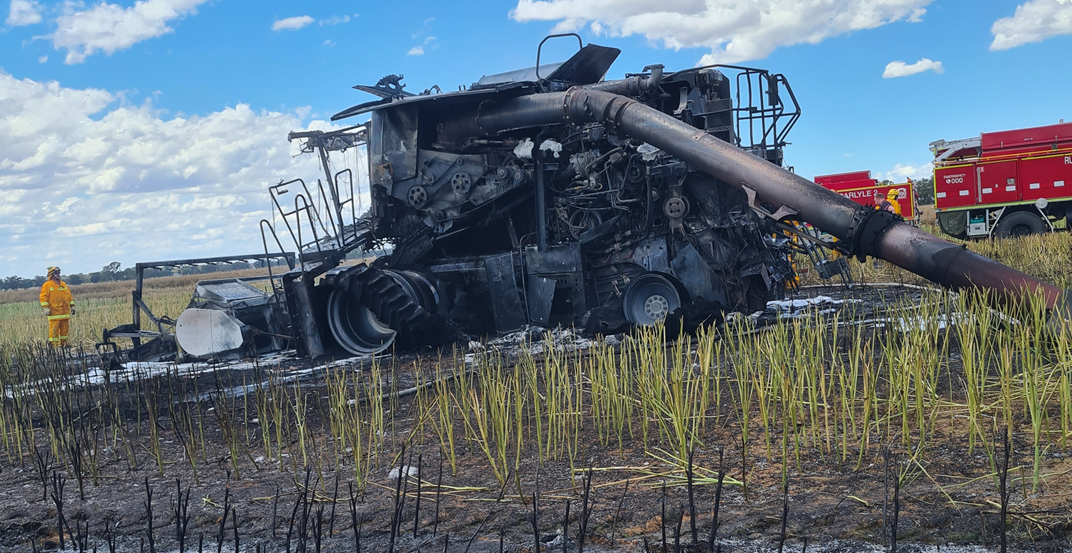CFA is urging farmers to take proactive steps to reduce the risk of header fires as harvest activities intensify in the coming weeks.
Last fire season, CFA responded to 27 header fires, with 77 per cent occurring in the northwest and west of the state.
The 2024/25 season presents significant challenges for farmers, with low rainfall, dry soil, and frost damage elevating fire risks in key agricultural areas.
CFA Gannawarra Group Officer Jack Hewitt, an experienced cereal, sheep, and hay farmer, says this year's conditions demand heightened caution.
"This season, with crops a bit lower, headers will be taking on more dirt, meaning farmers need to clean their headers more frequently to prevent dust buildup," Jack said.
"Fine dust from pulse crops like lentils and lupins can accumulate around the engine and exhaust system, and if it heats up, it can smoulder and potentially ignite spot fires, particularly in windrows."
Victoria produces 31 per cent of Australia's grain, estimated to be worth $4.4 billion and cereal growers in the northwest contribute a significant portion to that, with harvest season seeing fuel loads of six to 10 tonnes per hectare of cereal, legume and lentil crop.
Jack advises farmers to stay alert for any unusual sounds and to be fully prepared to act in case of a fire.
"With extra dirt, bearings can wear out and fail more quickly, adding to fire risks. If you hear any unusual noises from your header, don't ignore them, walk around the machine and check for excessive heat, " Jack said.
"It's important to keep a fire extinguisher in your header so you can act immediately if a fire starts."
CFA Chief Officer Jason Heffernan stresses that machinery safety isn't only a priority for farmers, all Victorians should focus on equipment maintenance and fire-safe practices.
"During the last Fire Danger Period, CFA responded to 114 vegetation fires caused by machinery and vehicles, including slashers, tractors, ride-on mowers, caravans, and trailers," Jason said.
"Each incident posed a risk not only to those on the ground but also to neighbouring properties.
"By prioritising equipment maintenance and simple safety protocols, we can significantly cut down on these preventable fires."
"With everyone doing their part, we can help protect lives and property."
Crop and Farm Machinery Fire Safety
- The most common cause of harvester fires is material collecting on hot engine components such as the manifold, exhaust and turbocharger.
- Make it part of your routine to check for straw or grass build-up, and hot bearings.
- Make sure your machinery is free of faults and mechanical defects and carrying a water fire extinguisher.
- Postpone paddock work during the highest fire-risk periods. On hot, dry days, exercise extreme caution before harvesting, grinding, welding, slashing or mowing.
- The key to avoiding harvester fires is diligence in maintenance such as clean-down and inspection.
- During paddock operations have the appropriate firefighting equipment in place. You're required by law to have a 9-litre water pressured extinguisher on hand.
- Avoid driving vehicles and motorbikes through dry grass or crop - the risk from the hot exhaust system is high.







